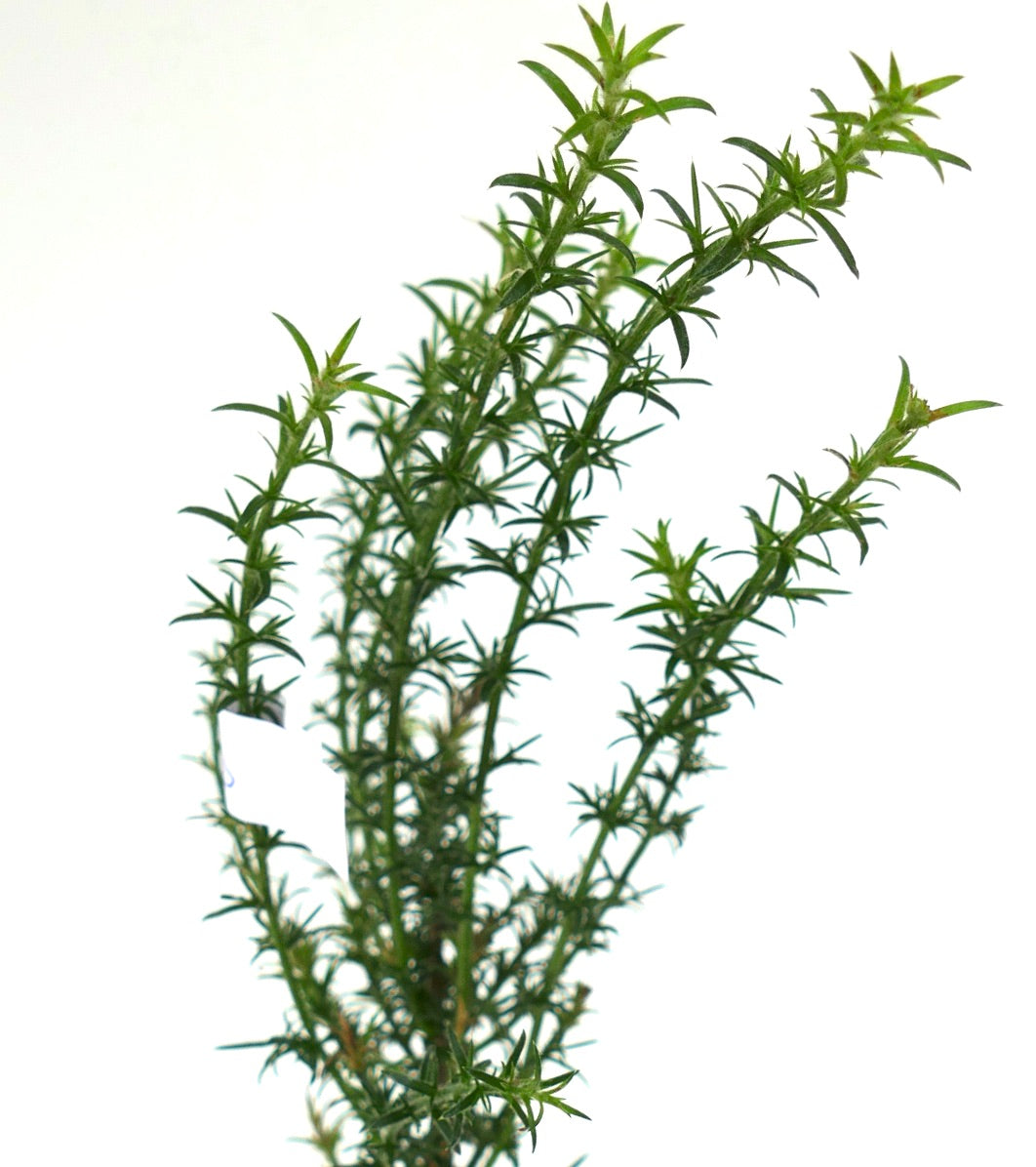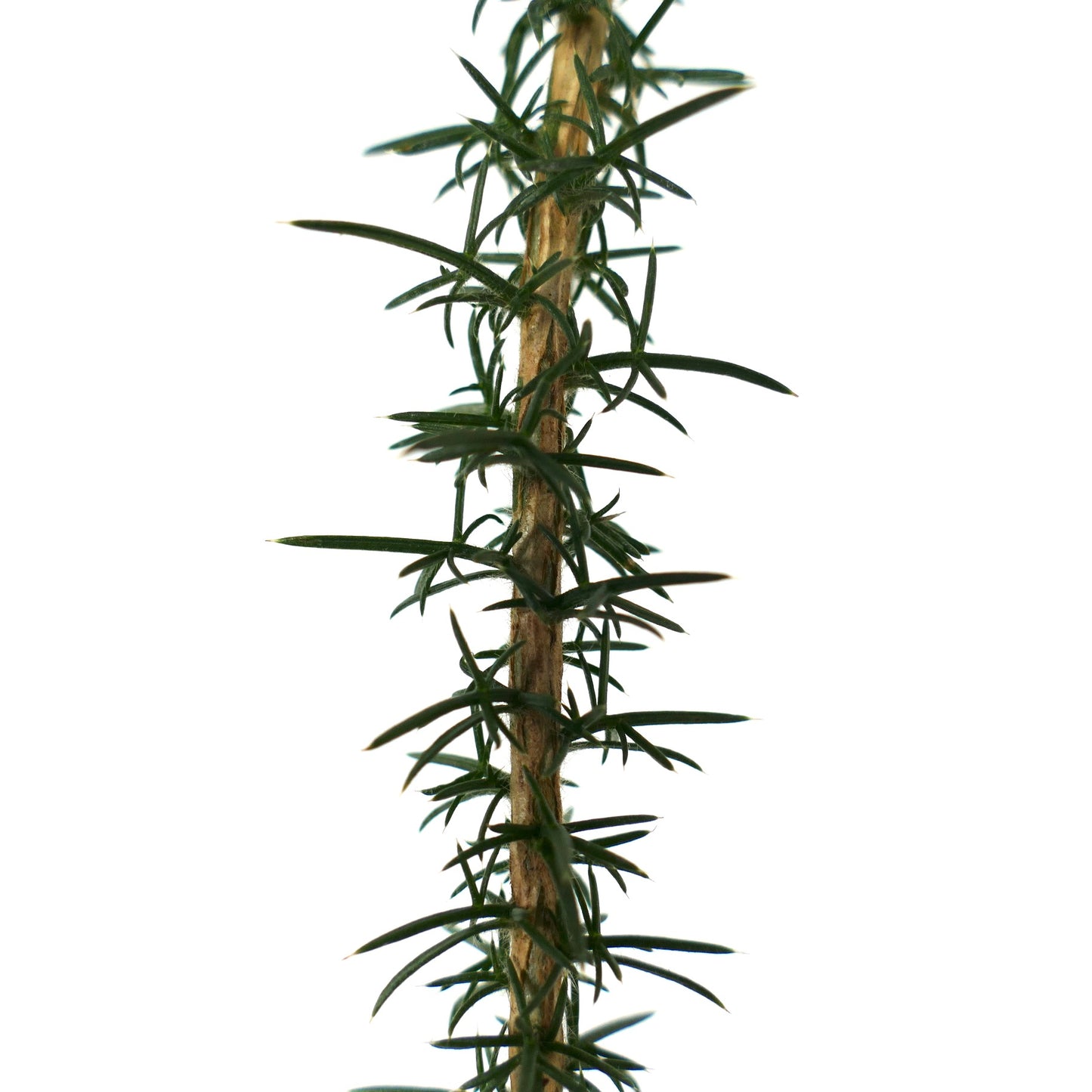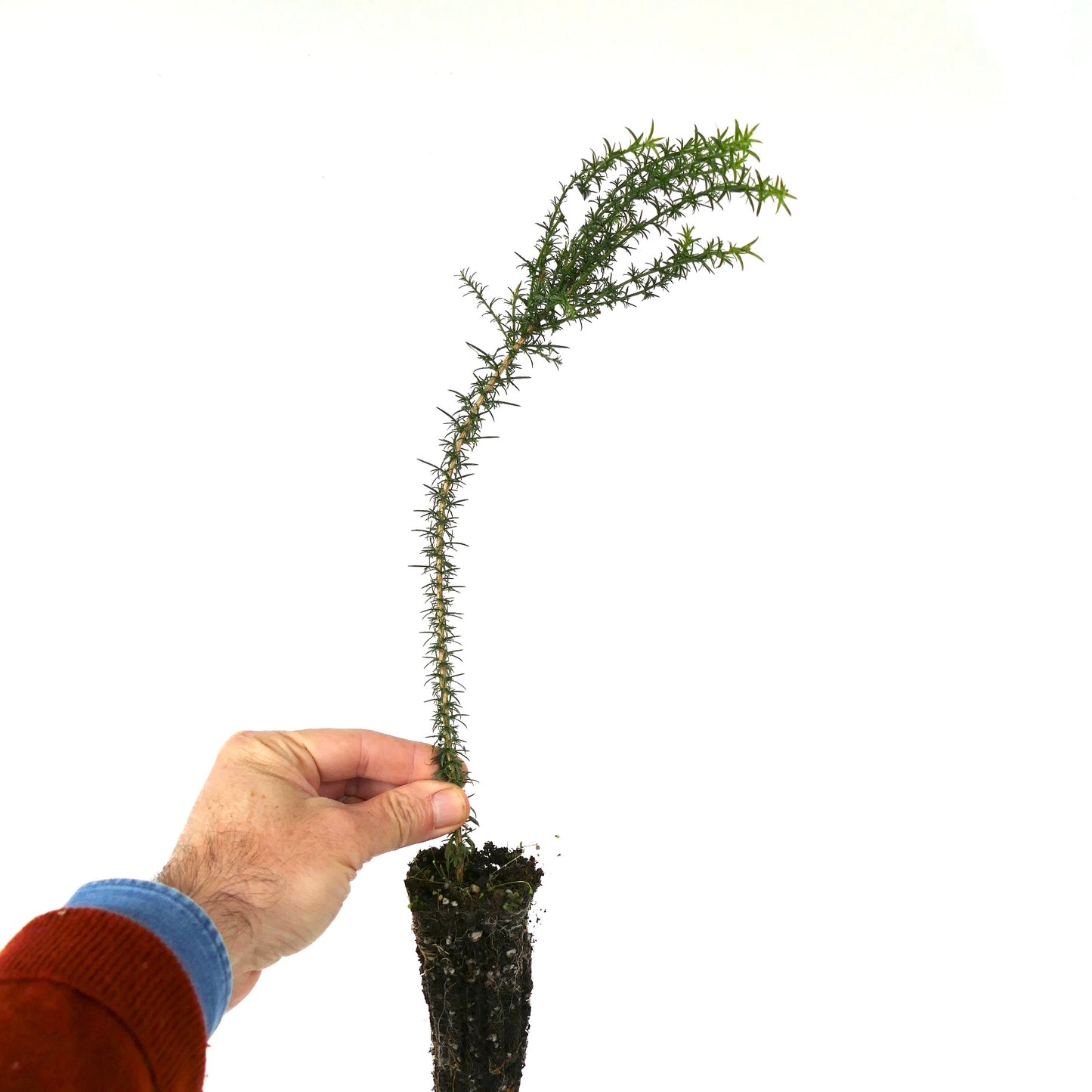Ulex europaeus 15-30cm
Ulex europaeus 15-30cm
Couldn't load pickup availability
Product Description
Ulex europaeus, commonly known as gorse or common gorse, is a robust, evergreen shrub native to Europe and parts of North Africa. It is a member of the Fabaceae family and is recognized for its bright yellow, pea-like flowers and spiky, evergreen foliage. Gorse typically grows in dense thickets and is known for its ability to thrive in poor, sandy, or rocky soils. Its vibrant blooms and distinctive appearance make it a notable feature of many landscapes. Gorse has adapted to various climates and is often found in coastal areas, heathlands, and open fields.
Cultivation:
-
Climate and Location: Gorse is adaptable to a range of climates but thrives in areas with mild, maritime conditions. It can tolerate salt spray and coastal winds, making it suitable for coastal gardens.
-
Sunlight: Gorse requires full sun to thrive and produce abundant blooms. Ensure it receives at least 6-8 hours of direct sunlight daily.
-
Soil: Gorse is highly adaptable to poor and well-draining soils. It can grow in sandy, rocky, or acidic soils and doesn't require rich or fertile ground.
-
Watering: Once established, gorse is drought-tolerant and doesn't need regular watering. Water sparingly, especially during prolonged dry spells, as it prefers drier conditions.
-
Pruning: Prune gorse in early spring to maintain its shape and prevent it from becoming too leggy. Wear protective clothing when pruning due to its spiky thorns.
-
Fertilization: Generally, gorse doesn't require heavy fertilization. In fact, it can thrive in nutrient-poor soils. Avoid excessive fertilization, which may lead to excessive growth and reduced flowering.
-
Mulching: Applying a layer of mulch around the base of the plant can help retain soil moisture and suppress weeds. Use a mulch that is well-suited to your soil type.
-
Propagation: Gorse can be propagated from seeds or semi-hardwood cuttings. Collect seeds in late summer or early autumn, and sow them in well-draining soil. Semi-hardwood cuttings can be taken in late summer.
-
Pest and Disease Control: Gorse is relatively pest and disease-resistant. It may occasionally suffer from aphid infestations, which can be controlled with insecticidal soap or by introducing natural predators.
-
Wildlife Attraction: Gorse provides important habitat and food for wildlife, including birds and insects. Its bright yellow flowers attract pollinators, making it a valuable addition to wildlife-friendly gardens.
Gorse is a hardy and resilient shrub that can add a splash of vibrant color to your landscape while requiring minimal maintenance. Its adaptability to poor soils and ability to withstand harsh conditions make it a suitable choice for gardens in various regions, especially coastal and heathland environments.
IMPORTANT: The offer is for a plant in the dimension indicated in title description.
SKU:BA-1282-S
Cultivation
Cultivation
Info and Disclaimers
Info and Disclaimers
Plant height: 15-30cm
Pot diameter:
Picture taken on:






